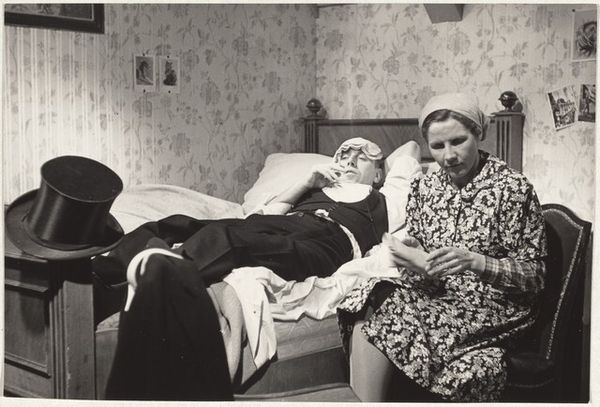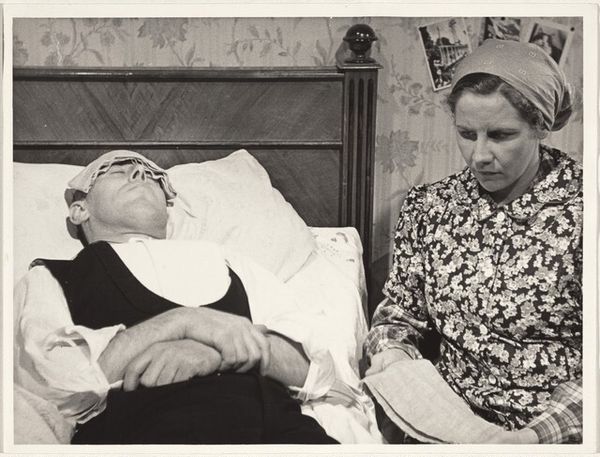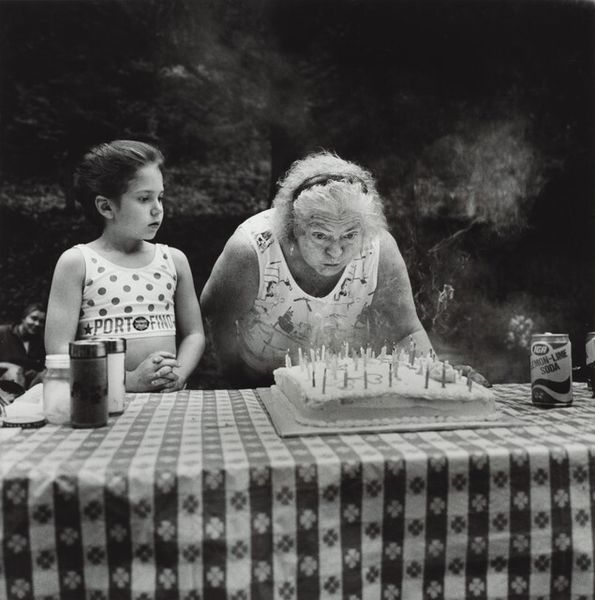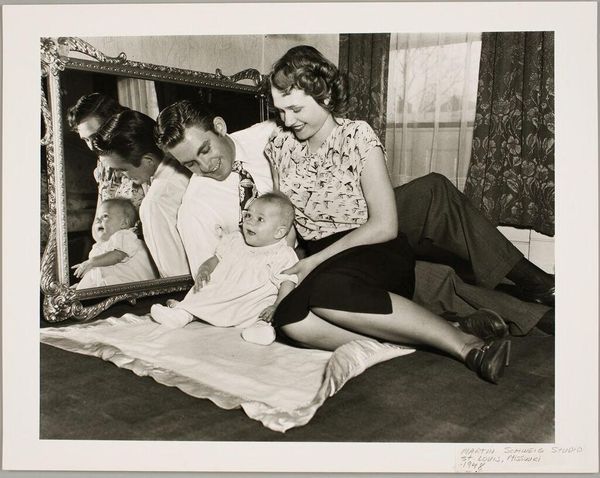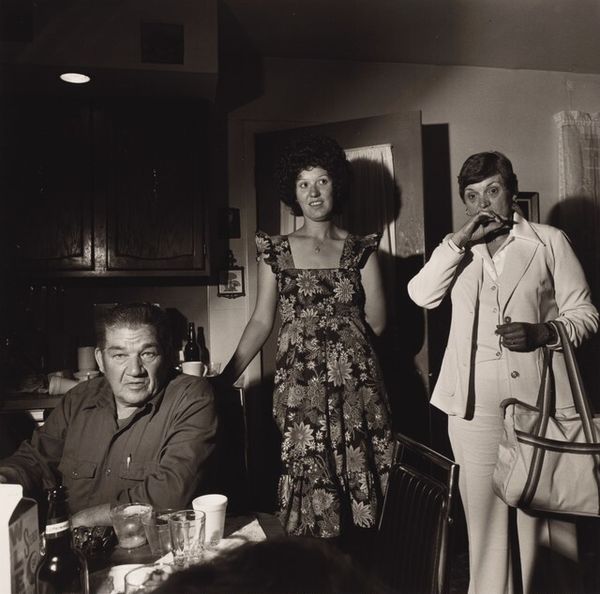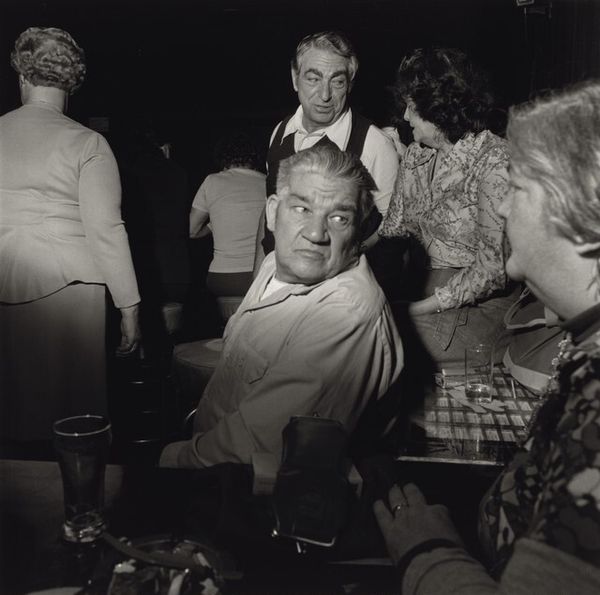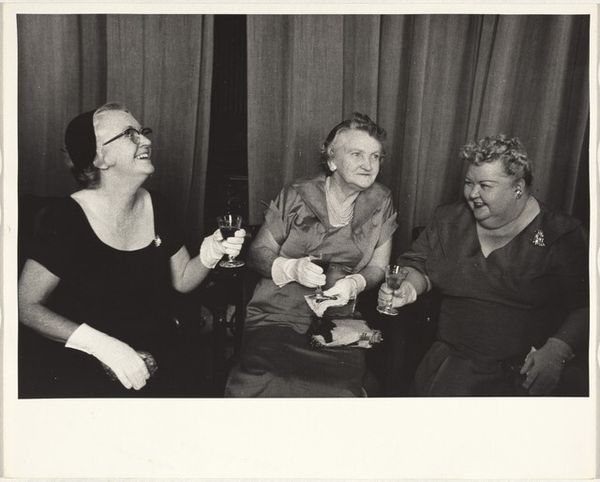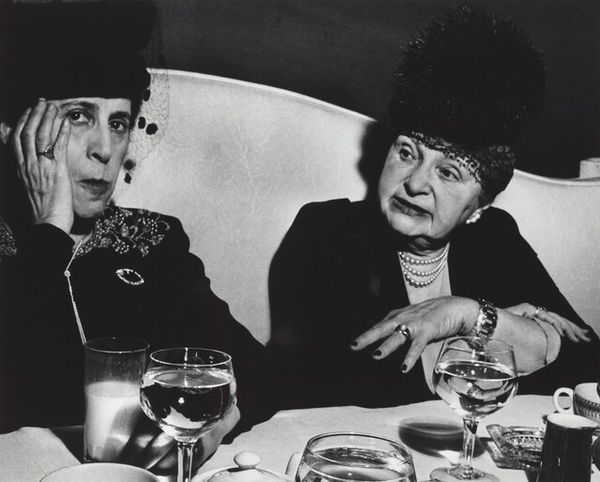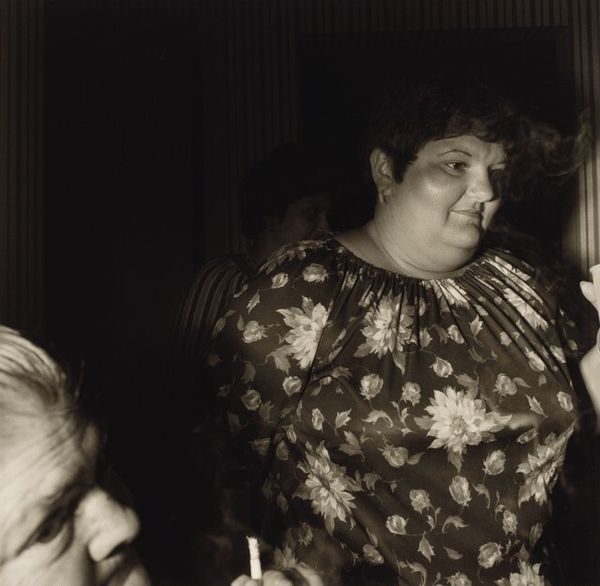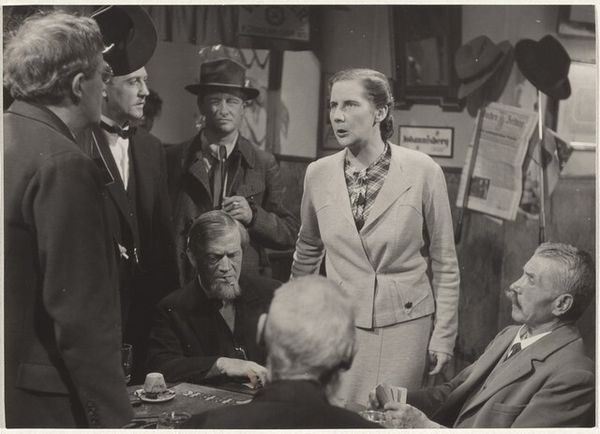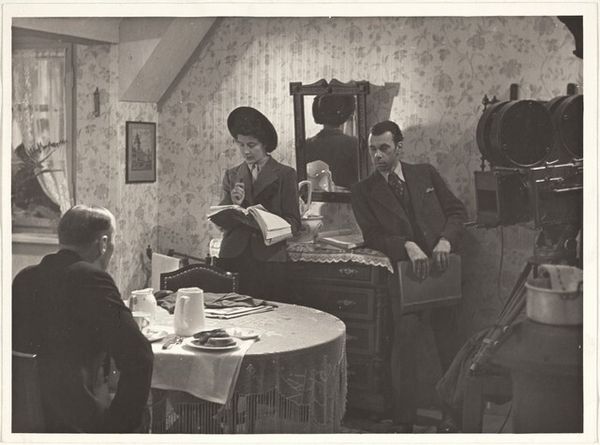
Gloucester, Massachusetts. Mrs. Mary Machado, her daughter Mrs. Isabell Lopez, her daughter Irene, an infant great-grandchild Dorothy, Jr. and her mother Dorothy, Sr., and a grandson Francis, the son of Irene after 1943
0:00
0:00
photography, gelatin-silver-print
#
portrait
#
black and white photography
#
harlem-renaissance
#
black and white format
#
social-realism
#
archive photography
#
photography
#
historical photography
#
black and white theme
#
group-portraits
#
gelatin-silver-print
#
monochrome photography
#
realism
Dimensions: sheet: 40.8 × 50.5 cm (16 1/16 × 19 7/8 in.) image: 36.8 × 47 cm (14 1/2 × 18 1/2 in.)
Copyright: National Gallery of Art: CC0 1.0
Curator: I am immediately struck by the powerful, multi-generational presence captured in this photographic portrait. It feels both intimate and monumental. Editor: This gelatin-silver print, "Gloucester, Massachusetts. Mrs. Mary Machado, her daughter Mrs. Isabell Lopez, her daughter Irene, an infant great-grandchild Dorothy, Jr. and her mother Dorothy, Sr., and a grandson Francis, the son of Irene," was taken by Gordon Parks sometime after 1943. He has frozen a complex family structure right before our eyes. What can we gather from the calendar page? Curator: I’m immediately drawn to the calendar – the visible date, June 1943, is itself a powerful symbol, pregnant with historical significance. The Second World War casts a shadow, perhaps influencing the subjects’ solemn expressions, a time of uncertainty and upheaval but also of familial solidarity and resilience that holds them together and is now fixed for the ages through photography. Editor: Precisely. I think Parks chose black and white photography in this portrait in order to underscore a social realist sentimentality that seems intentional in its ability to convey dignity. He frames the photograph around racial identity and his role as a Black photographer portraying multi-generational female lineages in white, Portuguese immigrant families—what could this visual narrative suggest at the time and today? Curator: It evokes a profound sense of intergenerational connection but the poses that seem at first naturally unposed or candid might seem almost intentionally styled by the artist, in order to give visual continuity. Mrs. Machado, and Lopez sit in the lower portions of the shot, anchoring it, while behind them in various degrees of direct gaze their daughters form the center, and the youngest child peeks through—connecting generations through simple gaze. I am deeply touched by this symbol. Editor: Yes. Their physical proximity and intertwined lives highlight their shared experiences of survival, resilience, immigration—which speaks to a history that needs acknowledging because often intersectional migrant histories are rarely brought to the fore. It asks us to consider the complexities of belonging and identity formation in times of conflict, highlighting how deeply those lived experiences ripple throughout entire family systems. Curator: Looking closely, this piece offers a glimpse into intimate bonds and personal identities within this larger context. And by focusing on such symbolism, these complex subjects reveal continuity—as they still teach about immigration today. Editor: It truly becomes an important historical document. A portrait that demands consideration, one that offers a rare moment for empathy and nuanced historical introspection that lingers long after viewing.
Comments
No comments
Be the first to comment and join the conversation on the ultimate creative platform.
